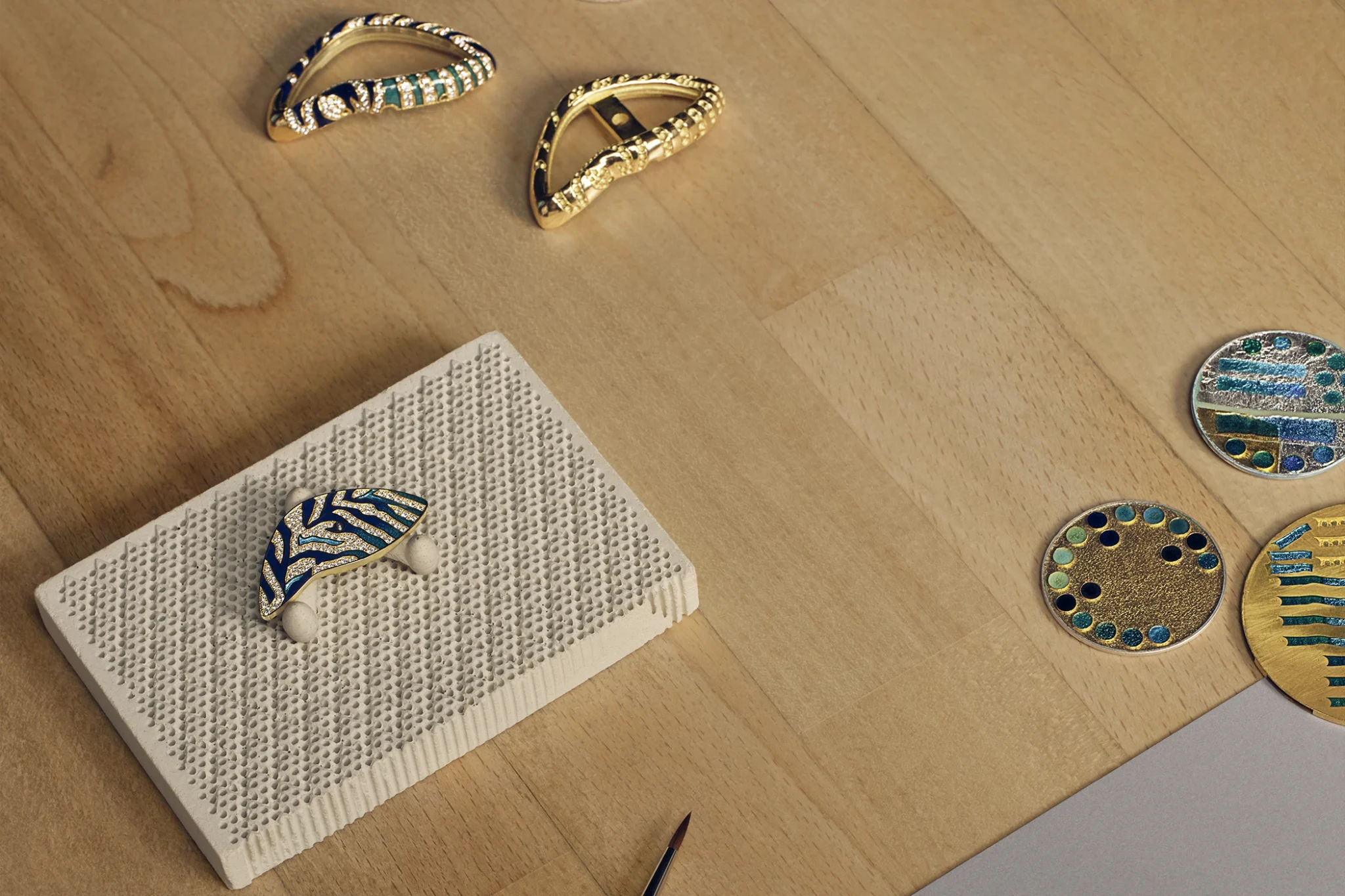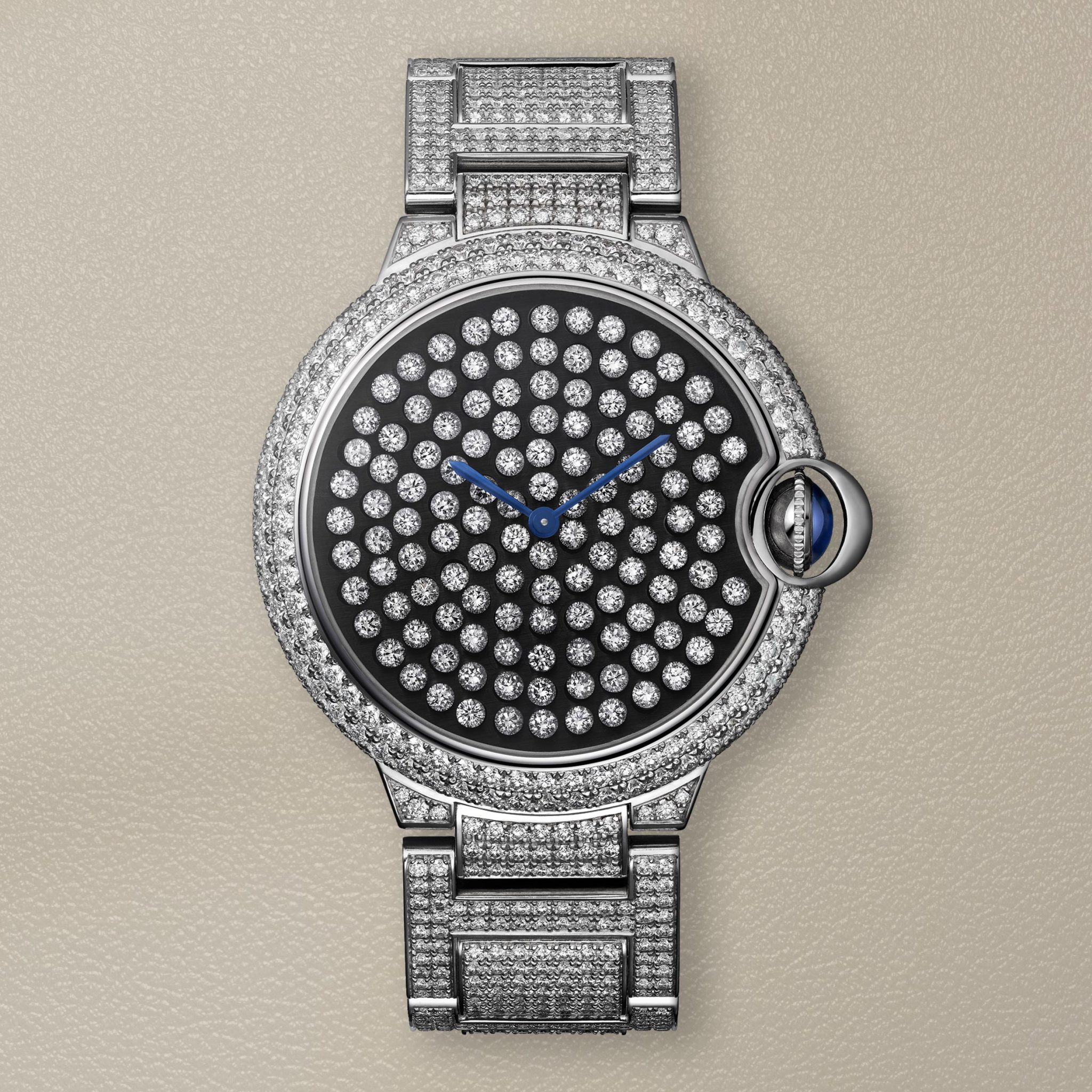The Porsche Design Chronograph 1 was the world’s first black wristwatch in 1972. Its most significant comeback followed in 2022.


In 2011, Cartier acquired a 17th century farmhouse a stone’s throw away from its watch manufacture in La Chaux-de-Fonds, lovingly renovated it, and created an atelier in which the maison prioritises traditional craftsmanship. The renovation work was completed in 2014; gem-setters and enamellers promptly moved in to bring the maison’s most breathtaking creations to life, simultaneously offering up the patience of a saint, a wealth of experience, and the utmost dexterity. Cartier’s Maison des Métiers d’Art is a place where tradition and innovation merge – but without following trends. To mark the tenth anniversary of Cartier’s Maison des Métiers d’Art, we spoke to Senior Vice President, Arnaud Carrez, and Image, Style and Heritage Director, Pierre Rainero, about the development, challenges, and special creations of Cartier’s Atelier des Métiers d’Art.


Senior Vice President, Arnaud Carrez, and Image, Style and Heritage Director, Pierre Rainero
‘King of Shapes’ is a phrase that Arnaud Carrez, who has been with Cartier for 27 years, uses repeatedly throughout our conversation. It succinctly summarises what Cartier has built up over the past 150 years. And, of course, his use of the phrase is justified: there is probably no other watchmaker that has created as many iconic watches in as many different shapes as Cartier: Santos, Tank, Asymétrique, Crash, Panthère, Ballon Bleu and many more. Collections such as the Santos or Tank, with their angular cases, are now over 100 years old – yet remain very much contemporary and unmistakably Cartier in their design. That said, Carrez also mentions that around 15 years ago, the focus on what made Cartier so strong in terms of watches was somewhat lost, while its portfolio was somewhat diluted by too many product launches and high complications. ‘Around 2010, there was a strong focus on men’s watches, complicated watches, and sports watches. You may remember the ID One or ID Two. At the same time, we neglected our core business and ladies’ watches, which we soon realised.’ By this, Carrez is referring to the fact that the market share in the ladies’ segment fell, while the share in the men’s segment stagnated.

Thus, a good ten years ago, the company decided to focus more on revitalising its icons than creating new product lines. ‘Cartier is not known for sports watches. Cartier is known for fine, elegant and sophisticated watches. We differentiate ourselves from other watch brands with our distinctive watch shapes and have a unique and clear positioning in the market.’ Today, it is the Cartier Privé collection that is dedicated to the maison’s most iconic models, bringing its heritage to life in the form of various modern interpretations. The collection is so exclusive that to this day, there are no more than a few hundred pieces in existence across the globe.

At the same time, the decision was made to create the Maison des Métiers d’Art, a dedicated space to preserve and pass on rare craftsmanship. After all, Cartier’s history in the field of jewellery goes back to the 19th century: to 1847, to be precise. ‘The preservation of traditional craftsmanship has always been a central concern of the Maison Cartier. And the Maison des Metiers d’Art is a true testament to this commitment,’ says Carrez. Savoir-faire had long been integral to the maison, and was finally united under one roof in 2014 with the creation of the Maison des Metiers d’Art. Traditional craftsmanship is usually passed on by word of mouth to the next generation – there is no manual or training for it. This makes it all the more important to pass on the knowledge quickly instead of letting it fade away in the large production halls of the main manufacture.
Today, around 50 watchmakers and artisans work in the 1,500 square metre farmhouse, using techniques that are sometimes thousands of years old, but also pursuing new, innovative approaches. Jewellers and watchmakers work side by side. The Mystérieuse, which was presented last year and in which the hands seem to miraculously float while the entire movement is built into the oscillating weight, was also created here. Eight years of development went into this exceptional timepiece.


Cartier’s Maison des Métiers d’Art can be divided into three main categories: the art of fire, the art of metalwork, and the art of composition. Its work with fire includes various enamelling techniques: painted enamel, cloisonné enamel, champlevé enamel, grisaille enamel, grisaille enamel with gold paste or plique-à-jour enamel. These techniques have been used for centuries and are continuously developed at Cartier. The art of metalworking includes traditional techniques such as granulation and filigree work, in which precious metals are worked into intricate patterns. Cartier takes these techniques to a new level by using high-quality materials such as gold and platinum. The art of composition refers to marquetry, in which different materials such as wood or flower petals are combined to create elaborate patterns. If you are interested in the details of these crafts, I can warmly recommend the article by my colleague Catherine Bishop, who recently visited Cartier’s Maison des Métiers d’Art.



In order to ensure that the craftsmanship can be passed on, Cartier has been committed to training watchmakers for many years. In 1993, the Maison opened the Institut Horlogerie in Couvert, Switzerland. Here, 150 to 200 new watchmakers are trained each year in the professions of watchmaking and mechanics. In addition, Cartier’s Maison des Métiers d’Art collaborates with various training centres in France and Switzerland specialising in gem-setting, jewellery and watchmaking.


Marquetry
When it comes to new creations, there’s no getting round Pierre Rainero, Cartier’s Image, Style and Heritage Director. He guards Cartier’s archives like a treasure trove, and there is likely no one who knows the history of the maison better than he does. However, this also brings with it certain challenges, as you don’t want to simply copy from the past when creating new pieces, but at the same time you have to observe a lot of rules in order to respect the brand’s DNA. ‘Some Métiers d’Art crafts are linked to a time in which they were used or born. I’m thinking of Etruscan granulation, for example. The challenge is to apply them in a different way and with a contemporary approach. Cartier’s history and philosophy is at the service of a kind of permanent exploration of forms, of new forms. And I mean forms in general; it can be colour associations or volumes, not just the design of watch cases. This is our philosophy and we are constantly exploring it.’



By this, Rainero means that the interplay of shapes, colours and volumes is important in order to design a new creation that meets Cartier’s requirements. At the same time, it is important to ensure that the piece remains timeless and is not too strongly linked to a particular era. ‘We use the expression ‘Rien de trop’ – never too much. And we follow this philosophy when we work on new designs and it explains how we have managed to remain desirable for generations.’

Last but not least, a new creation must radiate beauty. Cartier’s Maison des Métiers d’Art does not follow current trends, but has its very own vision of what beauty is. ‘We like to compare a style to a language. Grammar forms the basic framework. And then there is a vocabulary, which in our case is all about aesthetics, shapes and other things. And in a living language, some vocabulary terms become irrelevant over time, and some others are still there. But grammar can also evolve. And in our case, it evolves like living languages. In many languages, there are reforms that are adopted because grammar evolves to fit the times, and in our case, it’s exactly the same with our style. We at Cartier are fully aware that the sense of beauty evolves with the times. What we think is beautiful today is not exactly what we thought was beautiful 20 or 30 years ago. Thus, we are constantly asking ourselves how we can create objects that will stand the test of time. Even though some of our designs are deeply rooted in our history, I think they are still relevant today because we keep asking ourselves this question.’

In addition to the generally very limited creations that emerge from the Maison des Métiers d’Art, Cartier also creates one-off pieces for selected customers. Here, the extensive range of different crafts offers many design options, but each request is carefully scrutinised and must fit in with Cartier’s DNA. ‘There are things that we reject, be it aesthetics that don’t match our vision or political or aggressive tendencies that we don’t offer a stage for with our creations,’ explains Rainero. ‘Customer requests for special orders are becoming more and more demanding, as customers today have much easier access to information and historical references to inspire their very own Cartier watch,’ adds Carrez. When asked how a new, younger generation can be inspired by these crafts, some of which are thousands of years old, he answers evenly: ‘We don’t do anything specifically to please a young clientele. They already like what we do’.


Anyone who is allowed to create their own watch together with Cartier’s designers and watchmakers has to be patient. There are no watchmakers and artisans dedicated exclusively to special orders – every new enquiry is incorporated into regular operations. Depending on the requirements, production takes at least a year. At Cartier’s Maison des Métiers d’Art, watches tick a little differently – but they are made to last.
